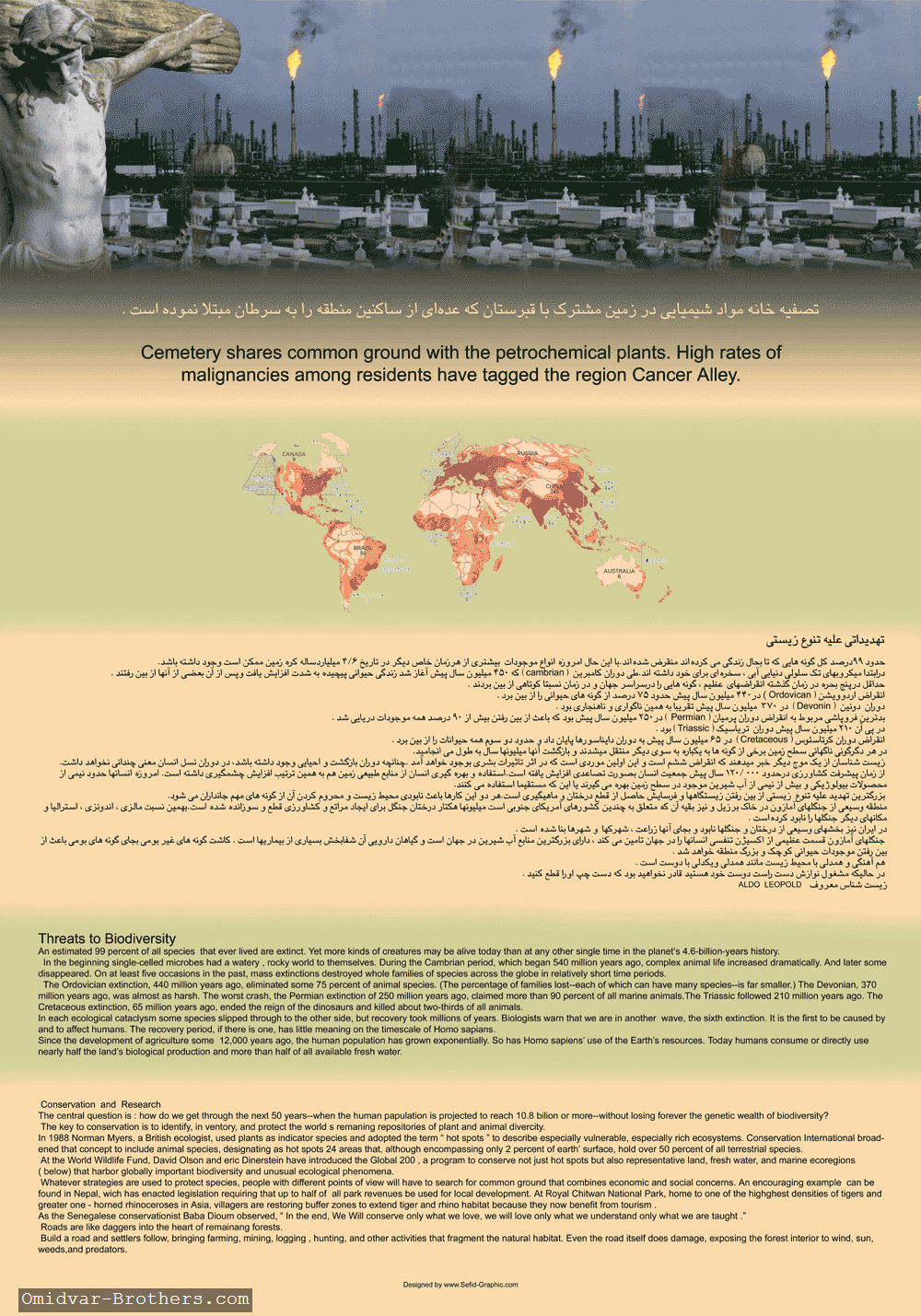Threats To Biodiversity
An estimated 99 percent of all species that ever lived are extinct.Yet more kinds of creatures may be alive to day than at any other single time in the planet's 4.6 billion-years history.
In the begining single-celled microbes had a watery, rocky world to themselves.During the Cambrain period, wich began 540 million years ago,complex animal life increased dramaticaly. And some disappeared. On at least five occasions in the past, mass extinctions destroyed whole familiesof species across the globe in relative short time periods.
The Ordovition extinction, 440 million years ago, eliminated some 75 percent of animal species.(The percentage of families lost-each of which can have many species-is far smaller.) The Devonian, 370 million years ago, was almost as harsh. The worst crash, the Permian extinction of 250 million years ago, claime more than 90 percent of all marine animals. The Triassic followed 210 million years ago. The Cretaceous extinction,65 million years ago, ended the reign of the dinosaurs and killed about tow-third of all animals.
In each ecological cataclysm some species slipped through to the other side, but recovery took millions of years. Biologists warn that we are in another wave, the sixth extinction. It is the first to be caused by and to affect humans. The recovery period, if there is one , has little meaning on the timescale of Homo sapians.
Since the development of agriculture some 12,000 years ago, the human population has grown exponentialy. So has Homo sapians use of te earth resource. Today humans consume or directly use nearly half the land's biological production and more than half of all available fresh water.
Conservation and research
The centralquestion is : how do we get through the next 50 years-when the human population is projected to reach 10.8 billion or more-without losing forever the genetic wealth biodiversity?
The key to conservation is to identify, in ventory, and protect the world's remaning repositories of planet and animal divercity.
In 1988 Norman Myers, a British ecologist, used planet as indicatorspecies and adopted the term "hot spot" to discribe especially vulnerable, especilally rich ecosystems. Coservation International broad-ended that concept to include animal epecies, designating as hot spot 24 areas that, althogh encompassing only 2 percent of earth surface, hold over 50 percent of all terristrial species.
At the World Wildlife Fund, David Olson and Eric Dinerstein have intrudices the Global 200 , a program to conserve not just hot spot but also representative land, fresh water, and marine ecoregions (below) that harbor globally important biodiversity and unusual ecologicalphenomena.
Whatever strategies are used to protect species, people with different points of view will have to search for common ground that combines and social concerns. An encouraging example can be found in Nepal, wich has enacted legislation requiring that up to half of all park revenuse be used for local development. At Royal Chitwan National Park, home to one of the highest densities of tigers and greater one-homed rhinoceroses in Asia, villagers are restoring buffer zones to extended tiger nd rhino habitat because they new benefit from tourism.
As the Senegalese conservationist Baba Dioum observe, "In the end we Will conserve only taht we love , we will love only what we undrestand only what we are taught."
Roads are like daggers into the heart of remaining forest.
Build a road and setters follow, bringing, mining, logging, hunting , and activities that fragment the natural habitat.Even the road tiself dose damage, exposing the forest interior to wind, sun. weeds, and predators.

 Omidvar Brothers
Omidvar Brothers